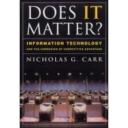I continue to apply CBPM in my current work while at the same time using Scrum for our software delivery. CBPM addresses those situations that are not as easy to adapt to an iterative approach.
It continues to amaze me how effective CBPM is at getting projects planned and to successful completion. One of my current projects has over 370 deliverables, not including the user stories for rewriting the application, which are being managed through Scrum. Yet the project is doing extremely well and is on schedule.
So, once again, I wonder why CBPM and other Agile methods work? A few things come to mine:
- CBPM and Agile methods are not deterministic but adaptive. That is, we as planners and team members, know that whatever plan we make will change. With that in mind we only plan enough to get us going and to more or less know how long it’ll take us to get there. We re-plan on a regular basis to adapt to changing conditions. By not planning in detail we avoid waste (lean concept) in planning for items that will change.
- We use the entire team to plan the effort. There’s no “mind behind the curtain” approach to doing planning. In this way we get many minds looking into the problem, identifying things that otherwise would have not been identified until much later. Also, we leverage the expertise of those who are going to do the work.
- We focus on what’s important: delivering a product to a customer. Task analysis are optional and typically up to the individual doing the work. While Scrum encourages team to decompose tasks and assign hours to them, tracking the work that remains, this is not a necessary activity. In CBPM there’s no focus at all in effort as the owner of the item is responsible for figuring out what needs to happen and getting it done by the committed date.
- Transparency: in CBPM and other Agile methods it is clear who owns an item and where it is. There’s no hiding behind complex Gantt charts. Ownership is clear. Status is clear.
- The PM is no longer the center of activity. In CBPM owners and users of deliverables need to talk to each other. In Agile the entire team is responsible for the delivery of a successful product. Reporting and accountability are where they should be.
- There’s a clear definition of what “done” means. In CBPM the owner and the user of a deliverable need to agree on what being done means. In Scrum every team has one or more definitions of done (user story, iteration/sprint, release, project). BTW, 99% done is not done!
There are probably numerous other reasons. Add yours!
BTW, both a one-day CBPM workshop and a two-day Scrum/Agile Project Management workshop have been scheduled for July in the Research Triangle Park area of North Carolina. Come join us if you want to learn more about these approaches.


